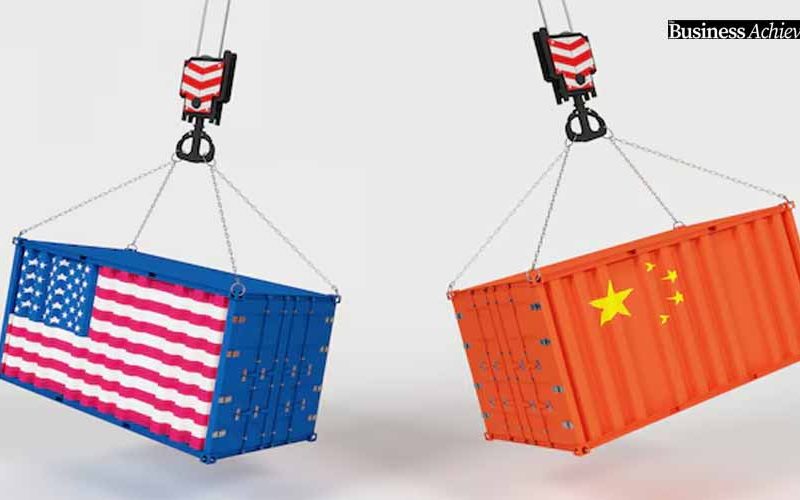The escalating tariffs have compelled businesses to reassess their supply chains and operational strategies
The United States and China remain entrenched in a protracted trade war, marked by escalating tariffs, strategic economic policies, and significant global economic repercussions. This ongoing economic battle has intensified under President Donald Trump’s administration, leading to widespread uncertainty across various sectors.
Escalation of Tariffs and Trade Policies
In early February 2025, President Trump imposed a 10% tariff on all Chinese imports, citing concerns over trade imbalances and national security. This action was part of a broader strategy that also included a 25% tariff on imports from Canada and Mexico, with a 10% tariff specifically on Canadian energy resources. These measures were implemented under the International Emergency Economic Powers Act, reflecting the administration’s commitment to addressing perceived unfair trade practices.
In retaliation, China announced tariffs of 15% on U.S. coal and liquefied natural gas, and 10% on crude oil and agricultural machinery, effective February 10, 2025. Additionally, China initiated an antitrust investigation into major U.S. tech companies and imposed export controls on critical materials, including rare earth elements essential for various industries. These countermeasures underscore China’s strategic approach to leverage its dominant position in key supply chains.
Impact on Businesses and Supply Chains
The escalating tariffs have compelled businesses to reassess their supply chains and operational strategies. Companies heavily reliant on Chinese manufacturing are exploring alternatives, though relocating production proves to be a complex and costly endeavor. For instance, firms specializing in niche markets, such as baby products and adaptive wear, face significant challenges in finding compliant manufacturers outside of China. The unpredictability of trade policies further complicates these decisions, leading many businesses to negotiate cost-sharing arrangements with suppliers to mitigate the financial impact of tariffs.
Major retailers like Walmart have expressed concerns over potential price increases resulting from the new tariffs. The company’s leadership highlighted the uncertainty surrounding future costs and the potential need to adjust pricing strategies to maintain profitability. This sentiment reflects a broader apprehension within the retail sector about passing increased costs onto consumers, which could affect demand and overall economic stability.
Economic Implications and Policy Responses
Economists warn that the trade war could lead to a scenario termed “stagflation-lite,” characterized by below-trend growth coupled with above-trend inflation. The imposition of tariffs is expected to disrupt supply chains, increase production costs, and ultimately raise consumer prices. Projections suggest that U.S. economic growth could slow by up to 1 percentage point in 2025, while inflation may rise by approximately 0.8 percentage points. These developments pose significant challenges for policymakers, who must balance efforts to curb inflation with the need to sustain economic growth.
The Federal Reserve has expressed heightened concern over the inflationary pressures stemming from the expanded tariff regime. While previous trade tensions prompted considerations of lowering interest rates to support growth, the current environment of high inflation necessitates a more cautious approach. The central bank emphasizes the importance of monitoring inflation expectations and stands ready to adjust monetary policy to prevent entrenched inflationary trends.
Global Repercussions and Strategic Shifts
The U.S.-China trade war has prompted shifts in global trade dynamics, with certain Asian economies emerging as beneficiaries. Countries like Vietnam, Malaysia, and Singapore have experienced increased foreign direct investment as companies seek to diversify their manufacturing bases away from China. Vietnam, in particular, has expanded its global trade links, attracting substantial investment in its manufacturing sector. Similarly, Malaysia and Singapore have capitalized on their strategic locations and favorable business environments to attract businesses looking to mitigate risks associated with the U.S.-China trade tensions.
Conversely, the trade war has strained relationships with traditional allies. The imposition of tariffs on imports from Canada and Mexico has led to diplomatic tensions and discussions about the future of trade agreements within North America. Both countries have expressed concerns over the economic impact of these tariffs and are exploring measures to protect their domestic industries. These developments highlight the complex interplay between economic policy and international relations in the context of the ongoing trade dispute.
Technological and Resource Considerations
The trade conflict extends beyond traditional goods, encompassing critical technologies and resources. China’s control over the production of strategic metals, essential for technologies like semiconductors and military applications, has become a focal point in the dispute. In response to U.S. tariffs, China has restricted exports of key materials such as gallium and germanium, which are vital for the electronics and defense industries. This move underscores China’s leverage in the global supply chain and raises concerns about the availability of essential components for technological advancement.
The U.S. technology sector faces significant challenges due to these restrictions, as reliance on Chinese-sourced materials is prevalent. Efforts to develop alternative supply chains are underway, but establishing new sources for these critical materials requires substantial time and investment. The situation highlights the strategic importance of securing diversified and reliable sources of essential materials to mitigate vulnerabilities in critical industries.
Future Outlook
The trajectory of the U.S.-China trade war remains uncertain, with potential for further escalation or negotiation. Recent statements from President Trump suggest a possibility for a new trade agreement with China, though details remain unspecified. The global economic community continues to monitor these developments closely, as prolonged trade tensions could have lasting impacts on international trade relations, economic growth, and market stability.
In the interim, businesses are advised to prepare for continued volatility by diversifying supply chains, engaging in strategic planning, and staying informed about policy changes. Policymakers face the intricate task of navigating the economic challenges posed by the trade war while striving to protect domestic interests and maintain global economic stability.
In summary, the U.S.-China trade war represents a multifaceted economic battle with profound implications for global trade, business operations, and economic policy. As both nations continue to assert their economic strategies, the ripple effects are felt worldwide, necessitating adaptive measures from businesses and vigilant policy responses to navigate the evolving landscape.







